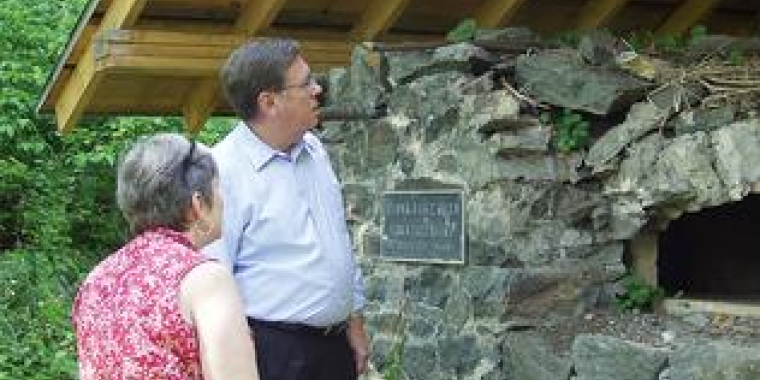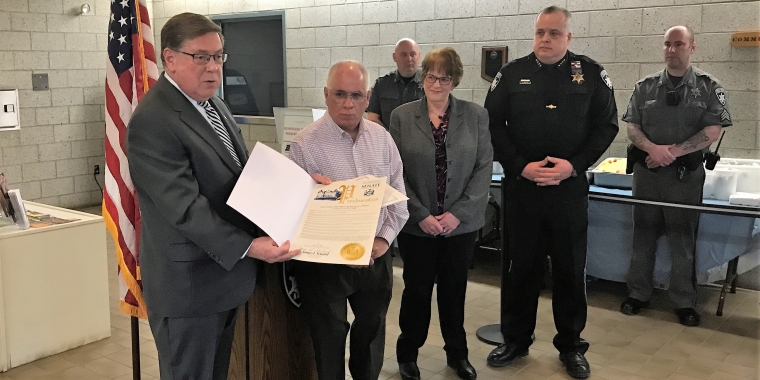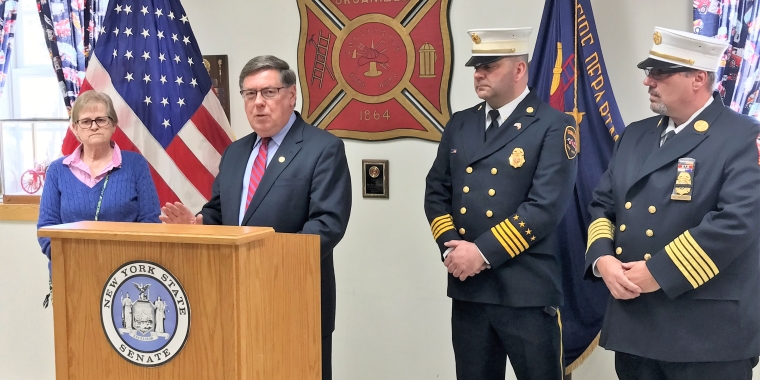
Seward Visits Site of Italian Community Bake Oven

By Rob Juteau
Little Falls, N.Y. - An artifact of the diverse ethnic heritage of the Mohawk Valley, Preserve Our Past has undertaken the stabilization of the Italian community bake oven that is listed on the New York State and National Register of Historic Places.
The oven dates from 1891 when industrialist Alfred Dolge brought the first group of Italian men to an encampment near the oven located in the woods off Route 167 North and from which they would daily leave to build the Dolgeville to Little Falls railroad.
The oven is accessible from Loomis Street Extension in the city of Little Falls and was used by the immigrants to bake bread to eat.
“A thorough study of newspapers published in Little Falls and Dolgeville in 1891 and 1892 provided a substantial number of news articles announcing the arrival of Italian work gangs who were hired as excavators for Alfred Dolge’s railroad spur which would connect his enterprises in Dolgeville to the New York Central in Little Falls,” said Preserve Our Past President Gail Huber. “The groups of Italian laborers lived together as bachelors in transient camps, and up to 150 loaves of bread were baked at a time in the community oven.”
Huber said that one reference notes that the workers were seen carrying their bread to work.
Additional newspaper articles, she said, reflect the hostility between the village and the Italian workers, as well as the financial problems encountered by Dolge in his relationship with his financial backers.
“The newspapers said the immigrants went on strike because they did not like what Alfred Dolge had to do with their wages,” said Huber. “He did not pay them, so they would take their loaves of bread, stick them under their arms and go to work.”
On Thursday afternoon, State Senator James L. Seward, who helped secure $15,000 in state funding to preserve the oven, paid his first ever visit to the site to see first-hand the restorations that have been made.
“This is the fun part of my job as a state senator,” said Seward, R,C,I - Oneonta. “I enjoy getting out of Albany to visit places that are unique to our state and to our community, and this oven is certainly unique. I have to commend the members of Preserve Our Past for undertaking this effort to preserve a piece of local and state history that might have been lost for ever had no one come forward.”
The oven has been covered by a wooden roof to protect it from the elements, and masonry repairs were made as needed. Work was also undertaken to strengthen the interior of the oven by shoring up some of its supports.
“This oven is a part of our collective Mohawk Valley and state histories, and provides us with a glimpse of what life was like the 1890s,” said Seward. “It is important to preserve sites such as this because they are part of our heritage and enrich our lives.”
Future plans for the bake oven site include landscaping the area for easier accessibility and the placement of interpretative signage. There has also been interest in a modified archeological dig of the immediate area surrounding the oven as it includes several other structure foundations.



